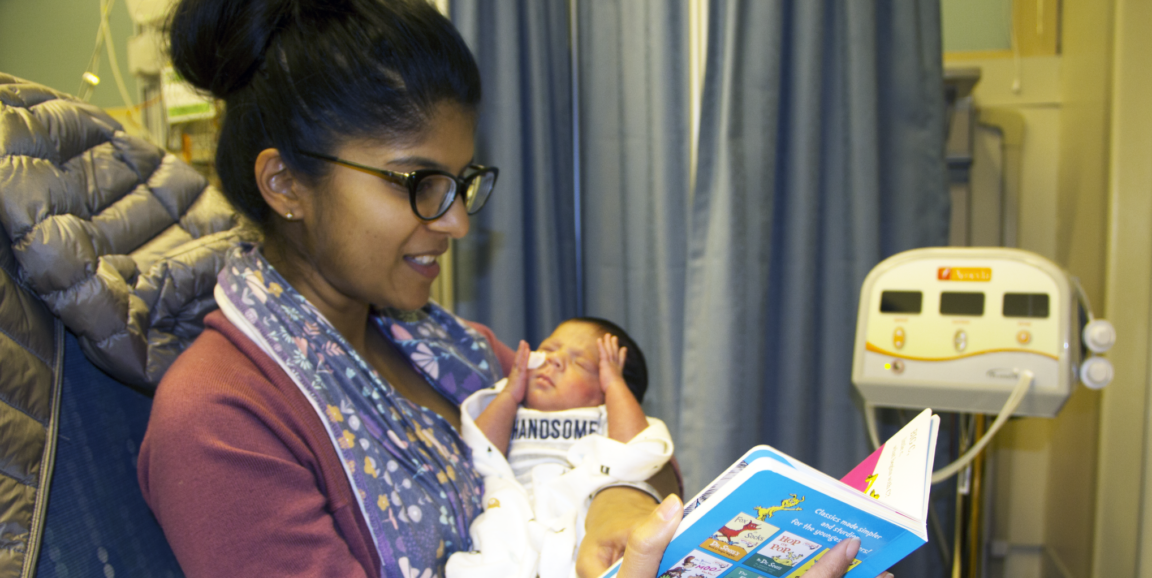Earlier this month, the tiniest patients at Lucile Packard Children's Hospital Stanford benefited from the work of a doctor who is not on the hospital's staff. At the Bedside Reading Event for NICU Families, held in the hospital's neonatal intensive care unit, parents and nurses sat down to deliver a healthy dose of Dr. Seuss's ABC:
Big C, little c, what begins with C?
Camel on the ceiling, c, c, c
Although the premature infants staying in the NICU can't yet appreciate the goofiness of such Dr. Seuss creations as ceiling-strolling camels, duck-dogs and fifer-feffer-feffs, several studies have demonstrated benefits to reading to babies, even very young preemies.
This area of research got a boost earlier this year when a Stanford team led by Melissa Scala, MD, published a scientific study in Journal of Perinatology examining NICU patients' cardiorespiratory stability before, during and after reading sessions.
The study was done to help clarify which sounds benefit premature babies. In recent years, many neonatal intensive care units have made efforts to lower their noise levels, since the loud noises of a busy hospital unit -- monitors beeping, conversations about patients, the clatter of people and equipment coming and going -- has been shown to cause potentially harmful fluctuations in babies' heart rates, blood pressure and blood oxygen levels.
But silence isn't ideal for preemies, either. Normally, during the latter half of pregnancy, the fetus begins hearing its mother's voice, the sounds of her body, and some noises of the outside world. Babies who arrive early still need to hear human speech to help their language development.
To help verify that reading sessions are safe and beneficial, Scala's team designed a study where parents read to babies for 15 to 60 minutes -- either in live reading sessions or via recordings that were played in their babies' incubators. The researchers compared babies' heart rates, breathing rates, blood oxygen levels, apnea events (gaps in breathing) and bradycardia events (unstable heart rhythms) before, during and after their parents read to them.
Breathing and heart rates were the same before, during and after parents' reading sessions, and there were no signs that reading was unsafe. Oxygen levels were better during and after reading: The babies had fewer periods of reduced blood oxygen, also called desaturation, during reading than before. The benefit lasted an hour after reading finished.
The study gave more details:
The effect was larger with maternal voice exposure than with paternal voice exposure and with live vs. recorded reading exposure...
Significantly fewer desaturation events seen during live reading may reflect the ability for parents during live reading to respond to infant cues and modulate the pitch, rhythm and volume of their voices. This type of reciprocal interaction has been well described as important to the development of parent-infant synchrony which has been linked to healthy parent-infant relationships and future infant neurodevelopment.
Hopefully, all that reading will help today's newborns grow into big kids who are chanting right along with their parents' future renditions of Dr. Seuss, all the way to "Big Z, little z, what begins with z?"
Photo of Veena Jones reading to her son, Bodhi, courtesy of Lucile Packard Children's Hospital Stanford




